#endangered art
Explore tagged Tumblr posts
Text
Art of the Brick Lego Exhibition Announces a Return to Melbourne
The record-breaking Art of the Brick Immersive Experience LEGO exhibition, that has become a global phenomenon, will return to Melbourne at The Showgrounds from April 14th 2024. Based on the work of Nathan Sawaya, a former New York City corporate lawyer turned world-renowned contemporary LEGO artist, The Art of the Brick offers an entirely new perspective on art. This unique exhibit version uses…

View On WordPress
#3D mapping#all ages#April 2024#art and play#art appreciation#art collaboration#art exhibition#art innovation#art phenomena#art tickets#art tour#art world#artistic expression#artistic LEGO#Australia debut#awe-inspiring#Big Swimmer#certified professional#childhood toy#contemporary art#creative art#creative expression#cultural events#Dean West#digital art#digital projection#endangered art#endangered species#family-friendly#global phenomenon
1 note
·
View note
Text
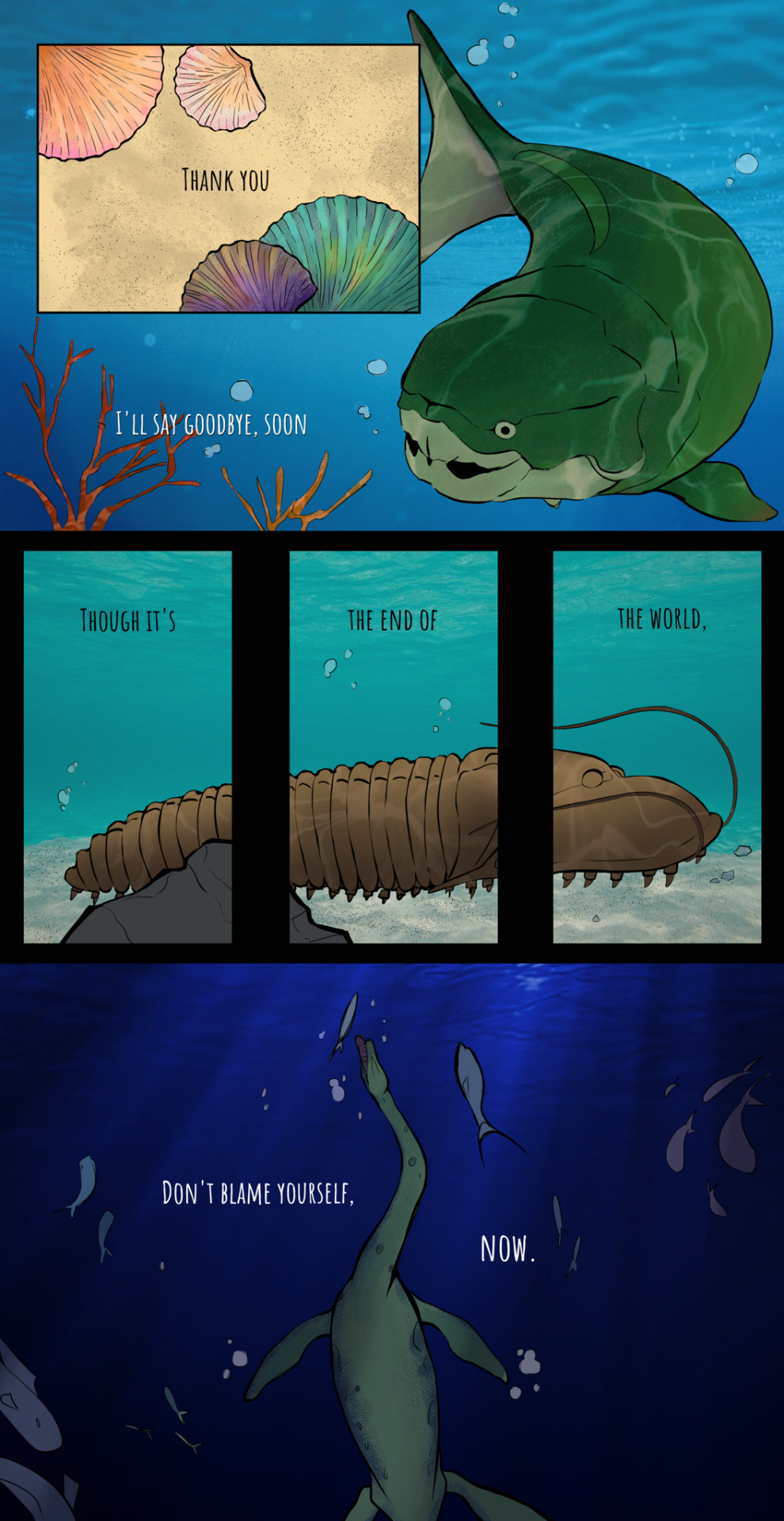
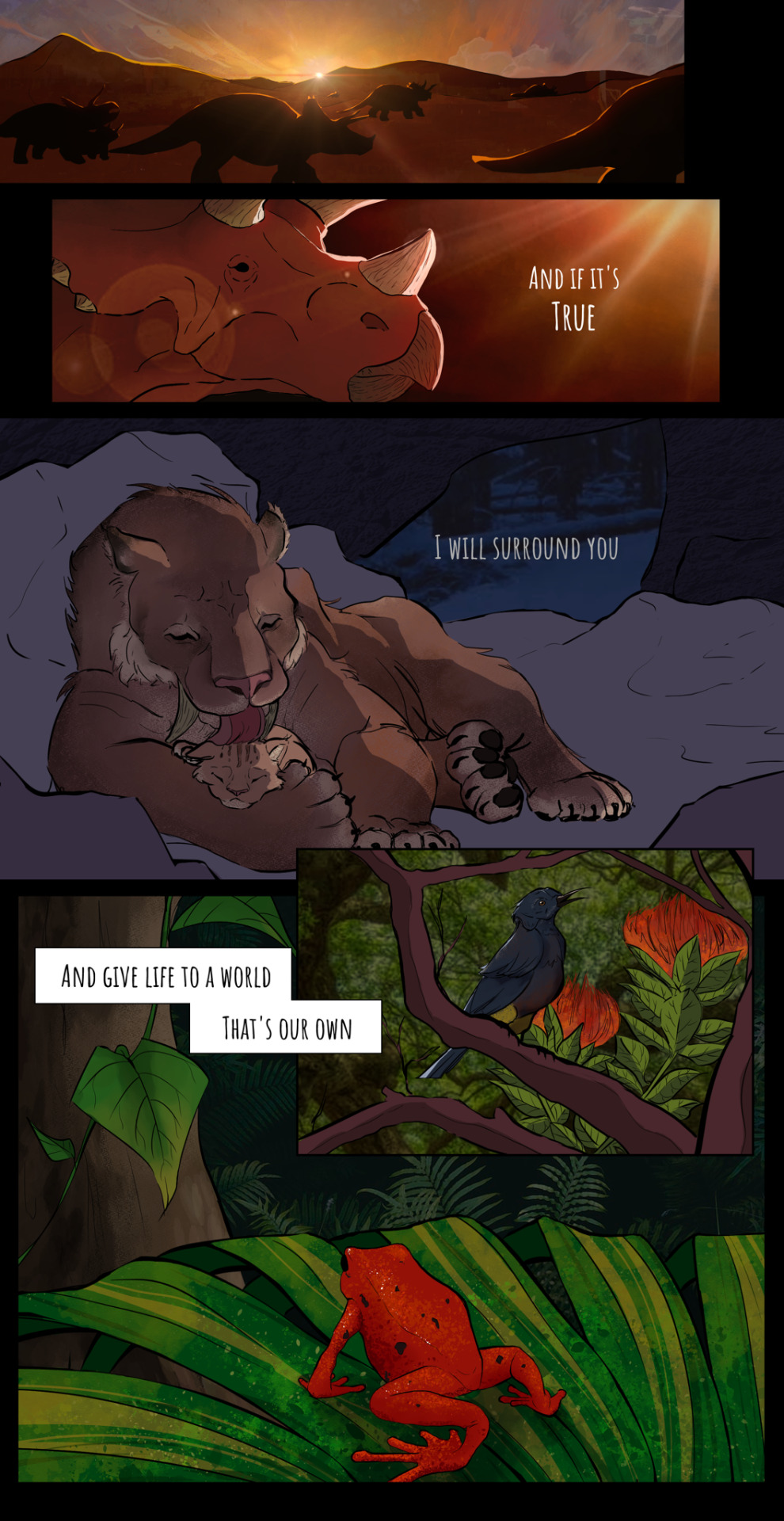
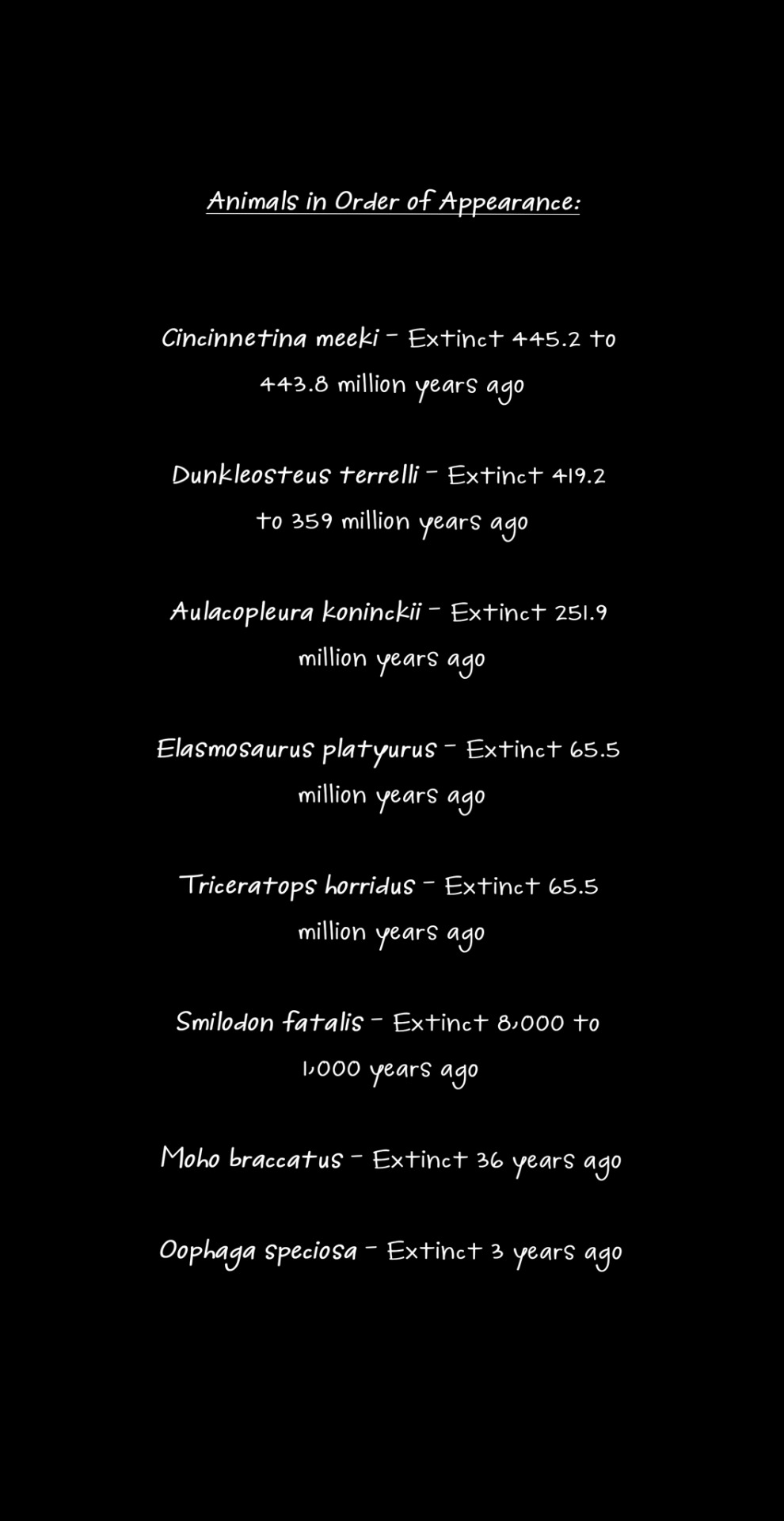
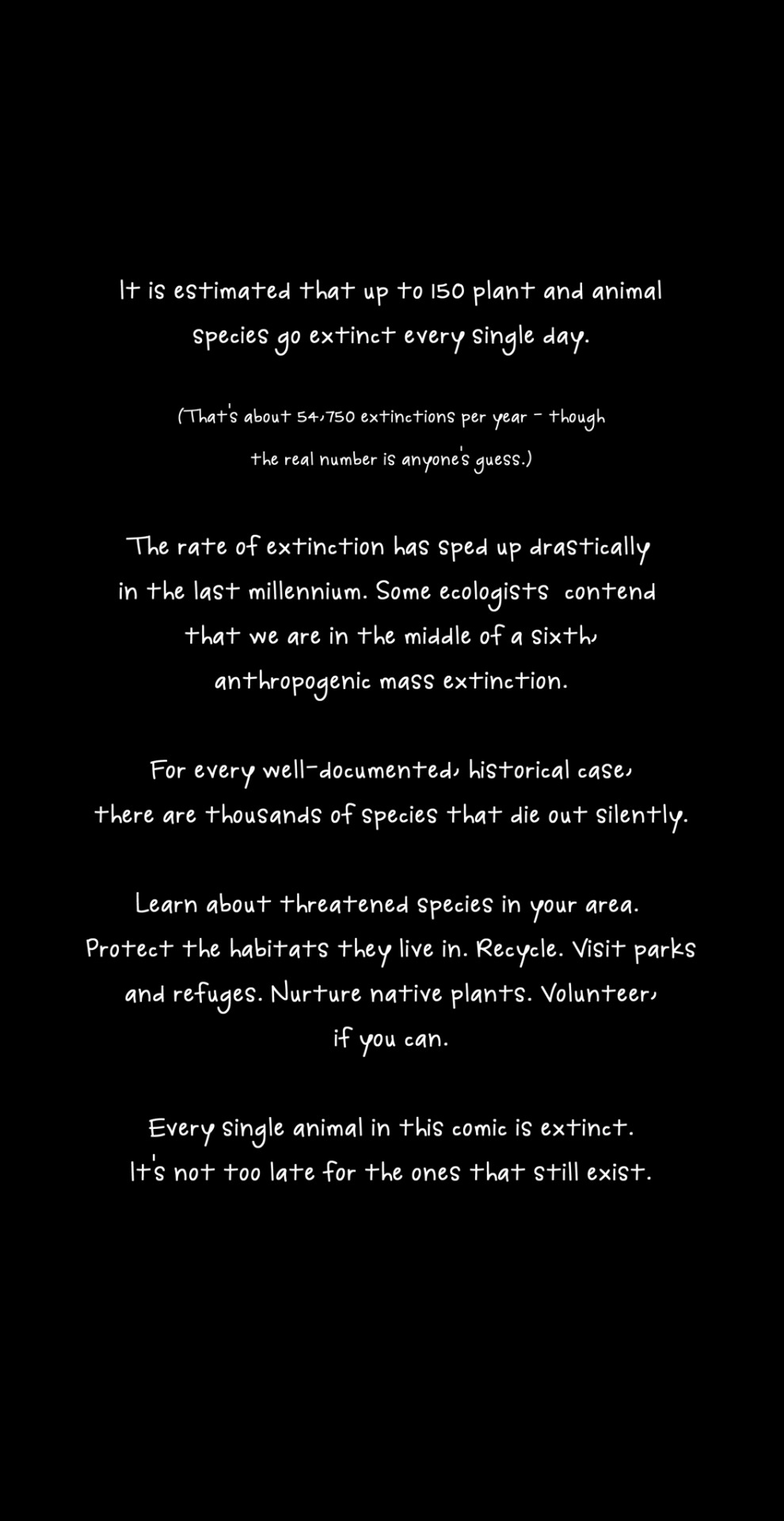
text from porter robinson's "goodbye to a world"
every single animal in this comic is extinct. it's not too late for the ones that are left.
edit: thanks @mudcrabmassacre for the correction, smilodon fatalis did not in fact go extinct in 1023 AD. the actual prediction is around 10,000 years ago - I think i may have missed a zero or two.
#comic#art#environment#conservation#animals#extinct species#fossils#climate change#dinosaurs#ancient life#endangered species#endangered animals#comics#artists on tumblr#digital art#digital comic#my-art#x
11K notes
·
View notes
Text

On April 19th, 1987, a bird known as Adult Condor 9 was captured in the Bitter Creek National Wildlife Refuge, near Bakersfield, California. After decades ravaged by the threats of lead-poisoning and pesticide exposure, and intense debate over the ethics of captivity, it had been determined that captive breeding was the final hope to save a species. As his designation might suggest, AC-9 was the ninth condor to be captured for the new program; he was also the last.
As the biology team transported the seven-year-old male to the safety of the San Diego Wild Animal Park, his species, the California Condor, North America's largest bird, became extinct in its native range. It was Easter Sunday—a fitting day for the start of a resurrection.
At the time of AC-9's capture, the total world population of California condors constituted just twenty-seven birds. The majority of them represented ongoing conservation attempts: immature birds, taken from the wild as nestlings and eggs to be captive-reared in safety, with the intention of re-release into the wild. Now, efforts turned fully towards the hope of captive breeding.
Captive breeding is never a sure-fire bet, especially for sensitive, slow-reproducing species like the condor. Animals can and do go extinct even when all individuals are successfully shielded from peril and provided with ideal breeding conditions. Persistence in captivity is not the solution to habitat destruction and extirpation—but it can buy valuable time for a species that needs it.
Thankfully, for the California condor, it paid off.
The birds defied expectations, with an egg successfully hatched at the San Diego Zoo the very next year. Unlike many other birds of prey, which may produce clutches of up to 5 hatchlings, the California condor raises a single chick per breeding season, providing care for the first full year of its life, and, as a consequence, often not nesting at all in the year following the birth of a chick. This, combined with the bird's slow maturation (taking six to eight years to start breeding), presented a significant challenge. However, biologists were able to exploit another quirk of the bird's breeding cycle: its ability to double-clutch.
Raising a single offspring per year is a massive risk in a world full of threats, and the California condor's biology has provided it with a back-up plan: in years when a chick or egg has been lost, condors will often re-nest with a second egg. To take advantage of this tendency, eggs were selectively removed from birds in the captive breeding program, which would then lay a replacement, greatly increasing their reproduction rate.
And what of the eggs that were taken? The tendency of hatchlings to imprint is well-known, and the intention from the very beginning was for the birds to one day return to the wild—an impossibility for animals acclimated to humans. And so, puppets were made in the realistic likeness of adult condors, and used by members of the conservation team to feed and nurture the young birds, mitigating the risk of imprintation on the wrong species.
By 1992, the captive population had more than doubled, to 64 birds. That year, after an absence of five years, the first two captive-bred condors were released into their ancestral home. Many other releases followed, including the return of AC-9 himself in 2002. Thanks to the efforts of zoos and conservationists, as of 2024 there are 561 living California condors, over half of which fly free in the wilds of the American West.
The fight to save the California condor is far from over. The species is still listed as critically endangered. Lead poisoning (from ingesting shot/bullets from abandoned carcasses) remains the primary source of mortality for the species, with tagged birds tested and treated whenever possible. Baby condors are fed bone chips by their parents, likely as a calcium supplement—but, to a condor, bits of bone and bits of plastic can be indistinguishable, and dead nestlings have been found with stomachs full of trash.
There's hope, though. There are things we can change, things we can counteract and stop from happening in the future. It was a human hand that created this problem, and it will take a human hand to fix it. Hope is only gone when the last animal breathes its last breath—and the California condor is still here.
-
This painting is titled Puppet Rearing (California Condor), and is part of my series Conservation Pieces, which focuses on the efforts and techniques used to save critically endangered birds from extinction. It is traditional gouache, on 22x30" paper.

#california condor#bird art#bird extinction#endangered species#conservation#series: conservation pieces#extinction stories
1K notes
·
View notes
Text

First art of 2025 🎉🎉 I’ve seen a few pictures of Nik with a cat, and I wholeheartedly believe that Nikolai would have an extremely expensive cat as his helicopter companion
#do NOT sit in the cats seat nik will perform a Gaz on you#Nikolai cod#myart#call of duty modern warfare#modern warfare#cod mw2#cod mw3#this cat has a raw food diet and only eats endangered animals#she’s his little princess#artists on tumblr#digital art
765 notes
·
View notes
Text

January Endangered birds 4 (#63) - the Bugun Liocichla (CR)
Somehow, this bird was undiscovered until 1995! It took several surveys before it was seen again ten years later and described. As far as we know, they are restricted to a teeny tiny area at the East end of the Himalayas.
We don't know much about them; Are their numbers declining? Why are they restricted to a tiny range when suitable habitat is nearby? Their estimated population is only 25-250 adults, so we just need to hope they are hanging in there and doing alright!
438 notes
·
View notes
Text
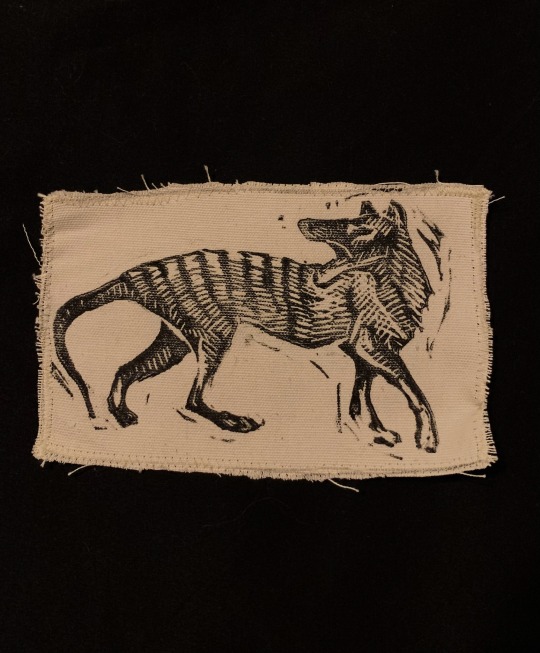
The Thylacine Sew-On Patch is now available on my Ko-fi shop!!
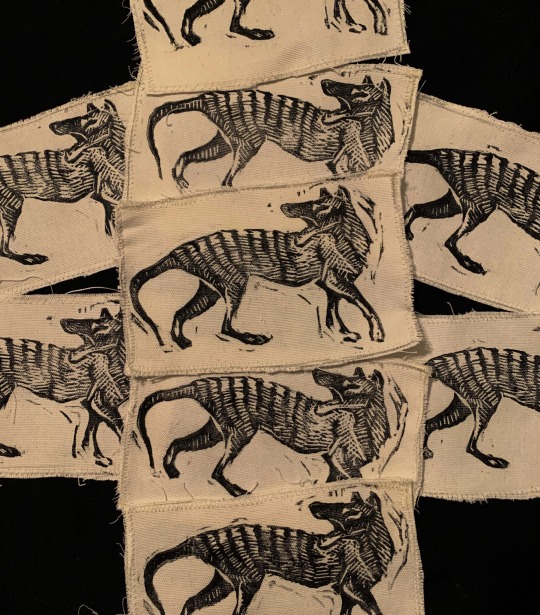
You can find my shop using this link here, or by using the linktree in my bio!!
#punk patches#punk#punk fashion#thylacine#tasmanian tiger#extinction#extinct animals#endangered#endangered animals#animals#animal art#printmaking#patch#patches#pins and patches#artists on tumblr
637 notes
·
View notes
Text
#WorldOkapiDay :

Engelbert Schoner (Germany, 1906-1977)
Okapis, 1961
colour woodcut, 64 x 47 cm
https://www.mutualart.com/Artwork/Okapis/AADC3C37ECA720A5A521DBAB78C69087
#animals in art#animal holiday#european art#20th century art#print#woodcut#1960s#pair#okapi#okapis#World Okapi Day#German art#Engelbert Schoner#modern art#African animals#endangered species
605 notes
·
View notes
Text
Holo Pangolin!

And a mini Holo Pangolin!
#joyousjoyfuljoyness#my art#foil art#foiling#oddly satisfying#satisfying#shiny#drawing#pangolin#cute animals#artists on tumblr#cute art#wild animals#wildlife#endangered species#endangered animals#critically endangered#animals#holographic#holographic aesthetic#animal drawing
315 notes
·
View notes
Text

My latest for The Institute for Bird Populations! This was our 2024 winter card illustration - a break from the snow, since the end of the year comes to the tropics too! Featuring a nosa' luta (Zosterops rotensis) chowing down on a caterpillar plucked off a trongkon guåfi (Serianthes nelsonii).
Both the bird and tree are critically endangered species - the bird is only found on the island of Rota in the Northern Mariana Islands, and the tree is found on Rota as well as Guam to the south, but as of this past winter, Guam now has no remaining adult trees of this species - the last one was damaged in a typhoon and finally succumbed.
#birblr#birdblr#bird art#scientific illustration#ornithology#conservation#ecology#island ecology#wildlife art#rota white-eye#nosa' luta#guam fire tree#trongkon guafi#hayun lagu#artists on tumblr#endangered species
256 notes
·
View notes
Text

attack dogs shouldn't bite the hands that feed them
#vandermarston#john marston#dutch van der linde#rdr2#red dead#artner#im finally making the decision to vandermarston post on main bc ive seen some other ppl actively making content for the rarepair#im excited !!! i wanna contribute !!!#obligatory disclaimer that ik dutch/john are unhealthy toxic yaoi etc etc but thats sort of the entire Point#the main storyline of rdr is about how dutch manipulates vulnerable people into following him and how he wields affection like a weapon#to coerce his followers into endangering themselves so he can protect himself and satiate his greed and his ego#and he canonically has groomed john into a life of crime that john spends the rest of his life struggling to break away from#so uhhhhhhh i think of vandermarston as a natural extension of themes present in the source text.#where its about power dynamics and cycles of regret and affection and manipulation.#my intention was to frame it like that in this art piece.#lately ive been drawing hand studies and ive gotten rlly into the idea of hands as a visual motif for control and power. like puppeteering#w this art im trying to focus on johns emotional turmoil with dutch as a shadowy powerful figure that stands above him.#yknow ?????#anyways. thats my rambling artist statement on it.#totally understand if this ship makes u uncomfortable (that is the Point) but i will be posting more about vm in the future.#feel free to blacklist the tag 'vandermarston' in advance of that#art#pardner posts#🤠
184 notes
·
View notes
Text
did you hear there’s a new short film that is GAY?? LESBIAN, even???
AND it’s filmed in a minority language?? a CELTIC language, one might say??
AND that it’s available for FREE, with SUBTITLES in both irish AND english??

“FAN” (2024) dir. cúnla ní bhraonáin morris
watch here 🫶
#fan#fan film#short film#irish film#irish short film#gay short film#lesbian#gay#irish#gaeilge#irish language#langblr#minority language#endangered language#gaelic#irish art#irish gaelic#stay#gearrscannán#gael#celtic#irish langblr#bloc tg4#romcom#comedy#lighthearted#romance#gay romance#lesbian romance#fan 2024
682 notes
·
View notes
Text


It was never a common species, the blue-grey warbler that locals called the jack pine bird. A belated discovery among American birds, it was undescribed by science until the mid 19th century—and then, known only on the basis of a single specimen. The bird's wintering grounds in the Caribbean would eventually fulfill the demands of collectors and museums, but the intricacies of its lifecycle remained a mystery for decades, the first nest only found in 1903. As the already-rare bird became rarer, people could only guess at why. There were just so few birds to look for, their breeding habitat inscrutable amidst the dense, impassable woodland of their Midwestern home. The one clue was the most apparent thing about the bird: its affinity with the jack pine (Pinus banksiana).
Over time, more nests were found—not in the eponymous trees, as might be expected for a songbird, but on the ground at their feet. Data points converged, leading to the realization that not only did the bird nest almost exclusively in proximity to the scrubby pines, but only utilized trees that fell within a specific range: new growth, between five and fifteen feet tall, with branches that swept shelteringly close to the ground. Subsequently, it would be noticed that the greatest volume of specimen collection for the bird had corresponded with years in which historically significant wildfires had impacted the Midwest—fires that, for decades afterwards, had been staunchly suppressed. The pieces fell into place, like jack pine seeds, whose cones open only under the heat of a blaze.
With the bird's total population having dwindled to the low hundreds, a program of prescribed burns, clearcutting, and replanting was instituted, with many acres of land purchased and devoted to the preservation and maintenance of suitable breeding habitat. Concurrently, efforts were made to protect the vulnerable bird against brood parasitism by the brown-headed cowbird.
When the first federal list of protected species was put forward in 1966, the name of the small grey warbler was inscribed beside birds such as the Kauai ʻōʻō and the Dusky Seaside Sparrow.
The ʻōʻō, last of the genus Moho, would be removed from the list in 2023 due to extinction, after thirty-six years without a sighting.
The endling Dusky Seaside Sparrow, a male named Orange Band, would die of old age in captivity in 1987, with his species being delisted three years later.
in 2019, fifty-two years after the creation of the Endangered Species Protection Act, the name of Kirtland's warbler, too, was removed from the list: it had been determined that, with a population now numbering nearly 5000, the jack pine bird could be considered safely stable.
Conservationists continue to work to preserve the breeding habitat of Kirtland's Warbler in the midwestern US, as well as its winter roosts in the Bahamas and neighboring islands (though selective logging has replaced actual burning in recent years, due to the dangers posed by unpredictable fires). It's the kind of effort that it takes to undo the damage we've caused to the planet and its creatures—the kind of hope that we need, to not give up on them, or on ourselves.
-
The title of this piece is Prescribed Burn (Kirtland's Warbler). It is traditional gouache on 18x24" watercolor paper, and is part of my series Conservation Pieces, which focuses on efforts made to save critically endangered birds from extinction.
#kirtland's warbler#conservation#bird art#extinction stories#bird extinction#endangered species#series: conservation pieces
1K notes
·
View notes
Text
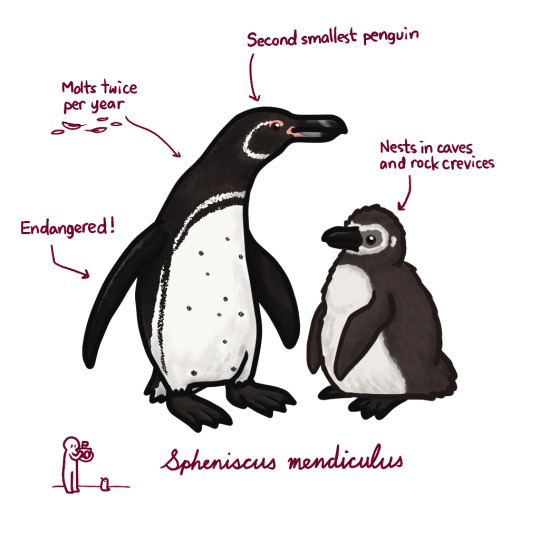
The Galápagos penguin is endemic to the Galápagos Islands and is the rarest penguin. Because they can't breed when ocean surface temperatures are above 25C, they're especially affected by climate change. Ecotourism is also a threat, due to littering and irresponsible birdwatching.
834 notes
·
View notes
Text

January Endangered birds 3 (#62) - the Short-crested Coquette (CR)
[Male depicted]
This hummingbird has only been found on a single road in southern Mexico. And not even the entire road - just 25km of it!
Are there more hidden in the mountains nearby? We don't really know. Until more are found, they are listed as Critically Endangered, just in case. The population is probably less than 1,500 and declining, especially since there is continual habitat loss in the area.
#bird of the day#endangered#apodiformes#trochilidae#hummingbird#ornithology#artists on tumblr#birds#endangered animals#bird art
558 notes
·
View notes
Text

"Saola"
Saola, also known as the Asian unicorn, is a critically endangered species first discovered in 1992 in Vietnam. They are found only in the Annamite Mountains of Laos and Vietnam. Due to their notoriously elusive nature, it's extremely difficult to spot them in the wild in person. Even though a few had been captured in the past for breeding programs, none survived after a few months in captivity. Currently, there is still no Saola in captivity.
I only knew about this creature about 6 years ago when doing a presentation on my country's endangered animals and it's kinda depressing that an animal discovered not too long ago is already on the brink of extinction. I figured I should draw it to raise awareness and also to immortalize it in my art :>
#artists on tumblr#digital art#my art#original art#saola#animals#animal art#critically endangered#illustration#endangered species
216 notes
·
View notes
Note
Can you make flora mad please 🤲🤲 she deserves it

couldn't decide between pouty or dead serious so u get both
#mak art#mak draws pl#professor layton#flora reinhold#she DOES deserve to be angry tbh#honestly if i had a fear of being left alone and my only guardian kept doing just that i'd have him whacked#anyway.#we can all imagine when she'd get pouty i say. it's quite in-character#but cold anger? oohg#thank u level 5 for not giving flora adequate characterization for me to work off of.#but i would LIKE to imagine this is what happens when u endanger her family within her radius AND she has a sword.#do not TOUCH her dad and godbrother
277 notes
·
View notes